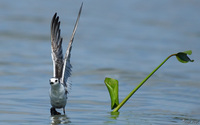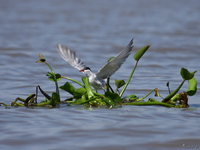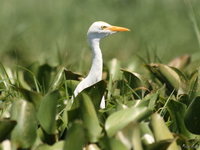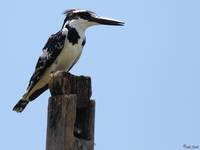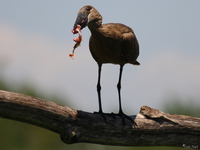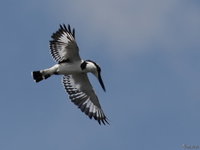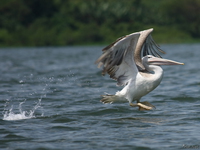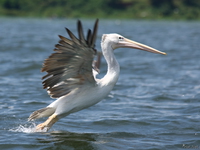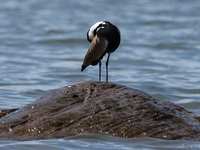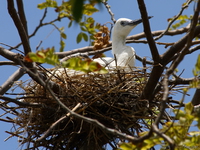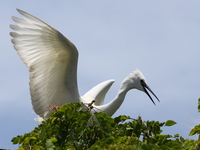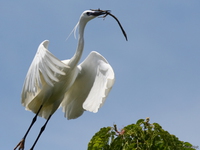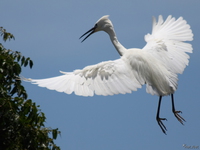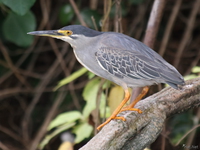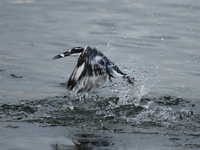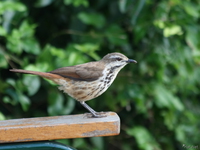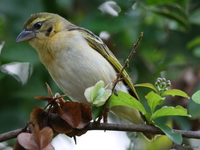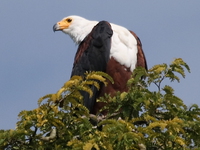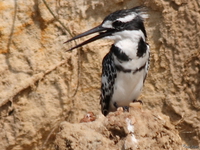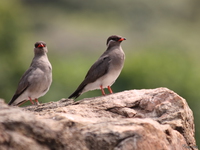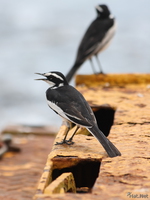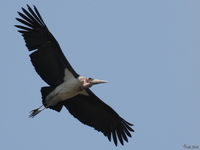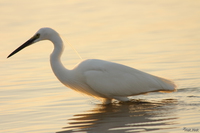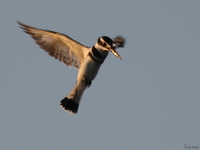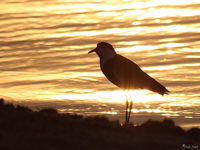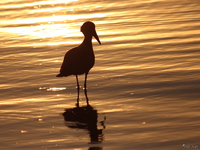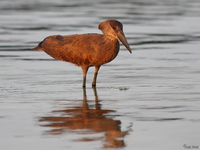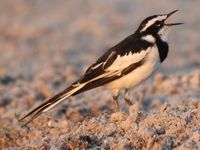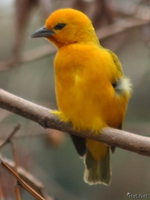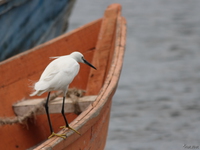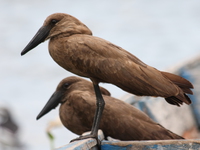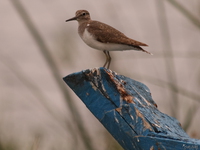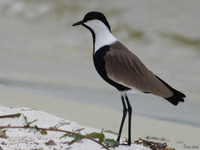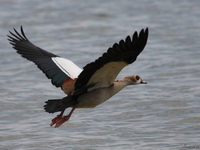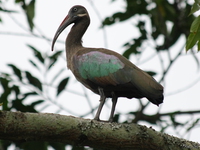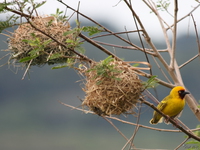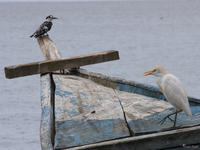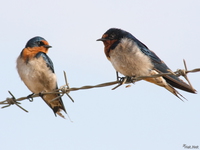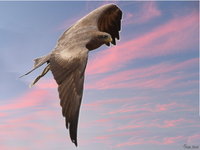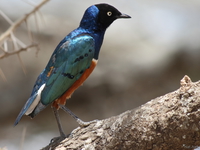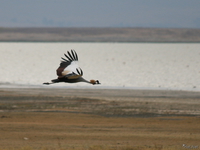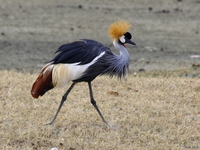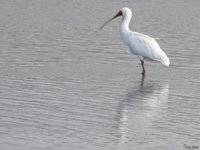birds
Terns are seabirds in the family Sternidae, previously considered a subfamily (Sterninae) of the gull family Laridae (van Tuinen et al., 2004). They form a lineage with the gulls and skimmers which in turn is related to skuas and auks. Terns have a worldwide distribution.
The Cattle Egret is a stocky species, averaging 51 cm long and weighing 200-600 g, with a short thick bill. The non-breeding adult has all-white plumage, a yellow bill, and greyish-yellow legs. When breeding, orange buff plumes develop on the back, breast and crown, and the legs become orange pink. The sexes are similar, but juvenile birds have a black bill.
This bird will give soft kre calls in flight, and a gruff rick-reck on the ground.
Kingfishers are birds of the three families Alcedinidae (river kingfishers), Halcyonidae (tree kingfishers), and Cerylidae (water kingfishers). There are about 90 species of kingfisher. All have large heads, long, sharp, pointed bills, short legs, and stubby tails. They are found throughout the world.
The Hammerkop (Scopus umbretta), also known as Hamerkop, Hammerhead, Hammerhead stork, or Anvilhead, is a medium-sized (56 cm) bird with a long shaggy crest. The shape of its head with a curved bill and crest at the back is reminiscent of a hammer, hence its name. Its plumage is a drab brown all over.
The Pied Kingfisher (Ceryle rudis) is a kingfisher in the near passerine bird family Cerylidae, the water kingfishers. It is the only member of the genus Ceryle.
It is common throughout sub-Saharan Africa and southern Asia from Turkey to India to China. It is resident, and most birds do not migrate, other than seasonal movements.
A pelican is any of several very large water birds with a distinctive pouch under the beak belonging to the bird family Pelecanidae.
Along with the darters, cormorants, gannets, boobies, frigatebirds, and tropicbirds, pelicans make up the order Pelecaniformes. Modern pelicans are found on all continents except Antarctica. They occur mostly in warm regions, though breeding ranges reach 45� south (Australian Pelican, P. conspicillatus) and 60� North (American White Pelicans, P. erythrorhynchos, in western Canada).[1] Birds of inland and coastal waters, they are absent from polar regions, the deep ocean, oceanic islands, and inland South America.
Pelicans are large birds with enormous, pouched bills. The smallest is the Brown Pelican (P. occidentalis), small individuals of which can be as little as 2.75 kg (6 lb), 106 cm (42 in) long and can have a wingspan of as little as 1.83 m (6 ft). The largest is believed to be the Dalmatian Pelican (P. crispus), at up to 15 kg (33 lb), 183 cm (72 in) long, with a maximum wingspan of nearly 3.5 m (11.5 ft). The Australian Pelican has the longest bill of any bird
The traditional terms plover, lapwing, and dotterel were coined long before modern understandings of the relationships between different groups of birds emerged: in consequence, several of the lapwings (subfamily Vanellinae) are still called "plovers", and the reverse also applies.
The adult Little Egret is 55�65 cm long with an 88�106 cm wingspan. It weighs 350�550 grams. Its plumage is all white. It has long black legs with yellow feet and a slim black bill. There is . In the breeding season, the adult has two long nape plumes and gauzy plumes on the back and breast. The bare skin between the bill and eyes becomes red or blue. Juveniles are similar to non-breeding adults but have duller legs and feet. The subspecies garzetta has yellow feet and a bare patch of grey-green skin between the bill and eyes, whereas nigripes has yellow skin between the bill and eye and blackish feet.
Little Egrets are mostly silent but make various croaking and bubbling calls at their breeding colonies and produce a harsh alarm call when disturbed.
An egret is any of several herons, most of which are white or buff, and several of which develop fine plumes (usually milky white) during the breeding season. Many egrets are members of the genera Egretta or Ardea which contain other species named as herons rather than egrets. The distinction between a heron and an egret is rather vague, and depends more on appearance than biology.
Until the 1950s, the Little Egret was restricted to southern Europe. Over the next few decades it became increasingly common in western France and later on the north coast. It bred in the Netherlands in 1979 with further breeding in the 1990s.
The night herons are medium-sized herons in the genera Nycticorax and Gorsachius. The genus name Nycticorax derives from the Greek for �night raven� and refers to the largely nocturnal feeding habits of this group of birds, and the croaking crow-like call of the best known species, the Black-crowned Night Heron. These herons are migratory outside the tropical parts of their ranges.
In Europe, Night Heron is often used to refer to the Black-crowned Night Heron, since it is the only member of the genus in that continent.
The pied kingfisher has evolved two unique strategies, shared by no other kingfishers. The Pied Kingfisher can hunt in both salt and freshwater. It can also deal with prey without returning to a perch, and can, for example, catch a second fish, or eat small prey in flight. These adaptations mean that this kingfisher can hunt over the sea or in estuaries that lack the perches required by other kingfishers.
This approachable largish (25cm) bird is unmistakable, with its exclusively black-and-white plumage. Unlike some kingfishers, it is quite gregarious, and forms large roosts at night. It can be easily tamed.
The swallows and martins are a group of passerine birds in the family Hirundinidae which are characterised by their adaptation to aerial feeding. Swallow is also used in Europe as a synonym for the Barn Swallow.
The African Fish Eagle is a large bird, and the female is larger than the males. Males usually have a wingspan of about 2 m (6 feet), while females have wingspans of more than 2.4 m (8 feet). They are very distinctive in appearance with a mostly brown body and large, powerful, black wings. The head, breast, and tail of African Fish Eagles are snow white and the hook-shaped beak is mostly yellow with a black tip.
The pied Kingfisher's nest is a hole in a bank, on its own or in a colony, where it lays 3-6 white eggs. The pied kingfisher sometimes reproduces co-operatively, with young non-breeding birds assisting the breeding pair. As with all kingfishers, the nest of a Pied soon becomes unsanitary.
Most terns were formerly treated as belonging into one large genus Sterna, with the other genera being small, but analysis of DNA sequences supports the splitting of Sterna into several smaller genera (see list, below) (del Hoyo et al., 1996; Bridge et al. 2005; Collinson 2006).
Wagtails are slender, often colourful, ground-feeding insectivores of open country in the Old World. They are ground nesters, laying up to six speckled eggs at a time.
The Marabou Stork, Leptoptilos crumeniferus, is a large wading bird in the stork family Ciconiidae. It breeds in Africa south of the Sahara, occurring in both wet and arid habitats, often near human habitation, especially waste tips.
A massive bird, large specimens are thought to reach a height of 150 cm (60 in), a weight of over 9 kg (20 lbs) and have a wingspan of at least 3.2 m (10.5 ft). In the last regard, it shares the distinction of having the largest wingspan of any landbird with the Andean Condor. Unlike most storks, the three Leptoptilos species fly with the neck retracted like a heron.
The Great Egret feeds in shallow water or drier habitats, spearing fish, frogs or insects with its long, sharp bill. It will often wait motionless for prey, or slowly stalk its victim. It is a common species, usually easily seen.
The pied kingfisher was initially believed to be descended from an ancestral American green kingfisher which crossed the Atlantic Ocean about 1 million years ago (Fry & Fry, 2000). However, more recently, Moyle (2006) considered it more likely that the Pied Kingfisher and the American green kingfishers are derived from an Old World species, with the Pied Kingfisher or its ancestor losing the metallic coloration afterwards.
Hammerkop lives in Africa south of the Sahara, Madagascar and southwest Arabia in all wetland habitats, including rice paddies. Normally it is seen alone or as a pair. The food is typical of long-legged wading birds, including fish, frogs, rodents and similar small animals.
The origin of wagtail appears to be in the general area of Eastern Siberia/Mongolia. Wagtails spread rapidly across Eurasia and dispersed to Africa in the Zanclean (Early Pliocene)where the sub-Saharan lineage was later isolated. The African Pink Wagtail (and possibly the Mekong Wagtail) diverged prior to the massive radiation of the white-bellied black-throated and most yellow-bellied forms, all of which took place during the late Piacenzian (early Late Pliocene), approximately around 3 mya.
The Weavers are small passerine birds related to the finches.
These are seed-eating birds with rounded conical bills, most of which breed in sub-Saharan Africa, with fewer species in tropical Asia and also in Australia. The weaver group is divided into the buffalo, sparrow, typical, and widow weavers. The males of many species are brightly coloured, usually in red or yellow and black, some species show variation in colour only in the breeding season.
The Great Egret is a large bird with all white plumage that can reach 101 cm in height and weigh up to 950 g. It is only slightly smaller than the Great Blue or Grey Herons. Apart from size, the Great Egret can be distinguished from other white egrets by its yellow bill and black legs and feet. It also has a slow flight, with its neck retracted. This is characteristic of herons and bitterns, and distinguishes them from storks, cranes and spoonbills, which extend their necks.
The Scolopacidae are a large family of waders, (known as shorebirds in North America). Many of the smaller species are often called "sandpipers", especially members of genera Calidris, Tringa and Actitis. Other well-known groups include curlews and snipes. The majority of species eat small invertebrates picked out of the mud or soil. Different lengths of bills enable different species to feed in the same habitat, particularly on the coast, without direct competition for food.
While authorities are generally agreed that there about 24 species of lapwing, classifications within the subfamily remain confused. At one extreme, some recognized no less than 19 different genera; other have gone as far as to group all the lapwings into the single genus, Vanellus. Current opinion appears to be that a more moderate position is appropriate.
These long-legged waders mostly have strongly patterned plumage. Although the most familiar northern hemisphere lapwing, Northern Lapwing, has a wispy crest, only two other species do so. Red or yellow facial wattles are a more typical decoration.
The Hadada Ibis, Bostrychia hagedash is a large, up to 76 cm long, dark brown ibis with a white "moustache", glossy greenish purple wings, large black bill with a red stripe on upper mandible, and blackish legs.
Weaver birds, also known as weaver finches, get their name because of their elaborately woven nests (the most elaborate of any birds'), though some are notable for their selective parasitic nesting habits. The nests vary in size, shape, material used, and construction techniques from species to species. Materials used for building nests include fine leaf-fibers, grass, and twigs. Many species weave very fine nests using thin strands of leaf fiber, though some, like the buffalo-weavers, form massive untidy stick nests in their colonies, which may have several spherical woven nests within. The sparrow weavers of Africa build apartment-house nests, in which 100 to 300 pairs have separate flask-shaped chambers entered by tubes at the bottom. Most species weave nests that have narrow entrances, facing downward.
The Great Egret Ardea alba, also known as the Great White Egret, White Heron, or Common Egret, is a wading egret, found in most of the tropical and warmer temperate parts of the world, although it is very local in southern Europe and Asia. It is called Kōtuku in New Zealand. It is sometimes confused with the Great White Heron in Florida, which is a white morph of the Great Blue Heron.
But the photo shown here is a cattle egret, not a great egret. I just didn't see enough great egret to drop the text in.
The Red-rumped Swallow (Cecropis daurica) is a small passerine bird in the swallow family. It breeds in open hilly country of temperate southern Europe and Asia from Portugal and Spain to Japan, India and tropical Africa. The Indian and African birds are resident, but European and other Asian birds are migratory. They winter in Africa or India.
Red-rumped Swallows are somewhat similar in habits and appearance to the other aerial insectivores, such as the related swallows and the unrelated swifts (order Apodiformes). They have blue upperparts and dusky underparts.
They resemble Barn Swallows, but are darker below and have pale or reddish rumps, face and neck collar. They lack a breast band, but have black undertails. They are fast fliers and they swoop on insects while airborne. They have broad but pointed wings.
Red-rumped Swallows build quarter-sphere nests with a tunnel entrance lined with mud collected in their beaks, and lay 3-6 eggs. They normally nest under cliff overhangs in their mountain homes, but will readily adapt to buildings such as mosques and bridges.
They do not normally form large breeding colonies, but are gregarious outside the breeding season. Many hundreds can be seen at a time on the plains of India.
Imagine you are the fish doing your fish routine in the beautiful Lake Victoria Suddenly you are pulled out of the water by a monster bird Life sucks, doesn't it?

